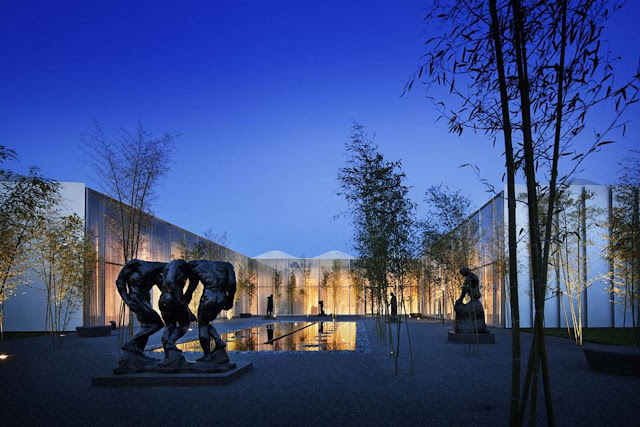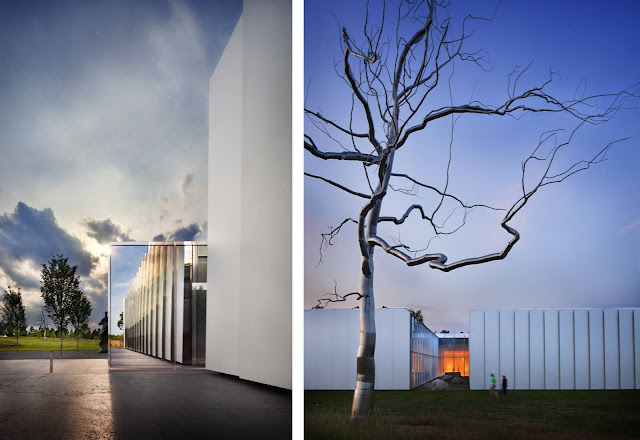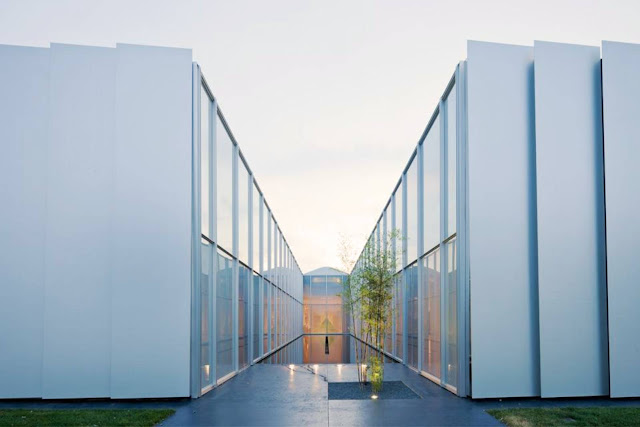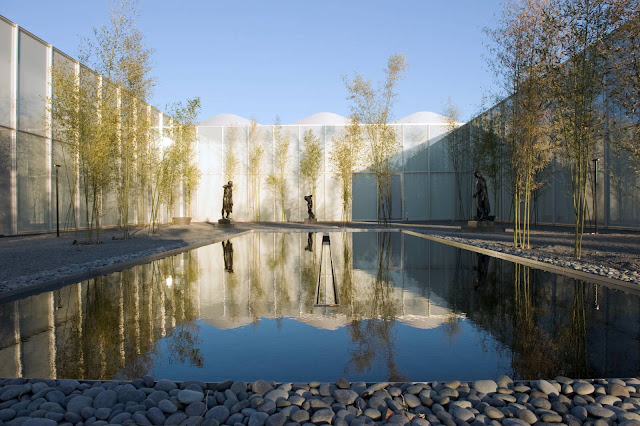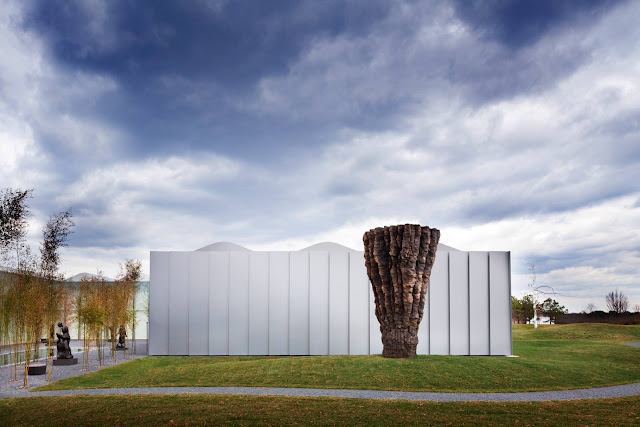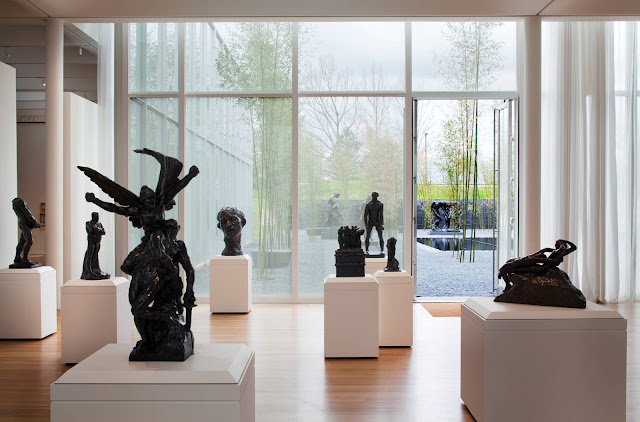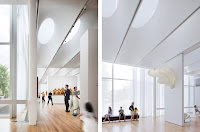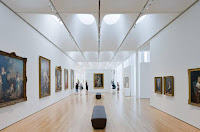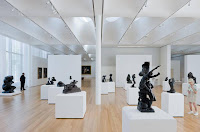Inside the North Carolina Museum of Art (NCMA), the light of day and lush surrounding fields have a presence unusual in institutional galleries for art. Overhead, hundreds of elliptical oculi in long parallel vaults bathe the museum interior in even, full-spectrum daylight, modulated by layers that filter out damaging rays.
In this gently luminous setting, against pure white walls, the art—including a masterful Giotto altarpiece—takes on heightened immediacy and vividness. A departure from traditional hierarchies, the museum is, in some respects, a single 65,000-square-foot room.
Within this spatial continuum, a succession of wall planes, many freestanding without reaching the ceiling, delineate separate galleries. Instead of fully enclosed rooms, each gallery has at least one open corner, inviting fluid movement.
Equally liberating, the museum’s layout is non-chronological, prescribing no specific route or sequence. The disposition of galleries tacitly encourages visitors to wander from Renaissance to Classical to the Rodin Court to European painting and Judaica, from Egyptian to contemporary American, prompting unforeseen visual connections and conceptual leaps.
Museumgoers also float freely from indoor galleries to outdoor sculpture courts or gardens and back in again. Because NCMA has no entry fee, it could forego formal checkpoints—transcending any need for a grand and controlling front hall or kiosks—in favor of multiple, seemingly casual entrances or exits.
Flirting with borders, the gardens and courts, some with reflecting pools, project into the building’s otherwise pure rectangular form. Where these elements incise the main volume, the interior’s white shell gives way to floor-to-ceiling glass, modulated by a fine-lined frit and layered, milky curtains, some sheer as veils and others more opaque.
With the big panes of glass, long sight lines open across the interior, casting the gardens as intimate foreground to a larger, wilder landscape: the surrounding164-acre grounds. Unlike picture windows, with overwhelming full-force views, this mediation of scale creates subtle progression—visual refreshment, balancing the art’s intensity.
Nearly tangible, the spatial insertions, yielding glimpses of water, mossy rock, grasses, and outdoor sculpture, become integral to the gallery experience. Back outside again, the building skin—a rain screen of pale, matte anodized-aluminum panels—carries on the discourse with the landscape.
These aluminum sheets, arrayed like great vertical pleats or shingles, softly pick up surrounding colors and movement. From oblique vantage points, the underlying strips of mirror-polished stainless steel that angle the panels off the facade capture unexpected, fragmented and scintillating reflections.
At such moments, the landscape seems to pass right through these flickeringly solid walls, only to reemerge inside, deftly transformed, a luminous foil to the artwork.
Location: Raleigh, USA
Architect: Thomas Phifer and Partners
Project Team: Greg Reaves, Gabriel Smith, Christoph Timm, Adam Ruffin, Katie Bennett, Kerim Demirkan, Len Lopate, Jon Benner, Joseph Sevene, Daniel Taft, Rebecca Garnett
Executive Architect: Pearce Brinkley, Raleigh Jeffrey Lee, Clymer Cease, David Francis, Matt Konar, Juliette Dolle, Henry Newell, David Lehman
Landscape Architect: Peter Walker and Partners
Executive Landscape Architect: Lappas + Havener
Structural Engineers: Lasater Hopkins Chang, Raleigh—Skidmore, Owings and Merrill
Mechanical Engineers: Stanford White and Associates
Civil Engineers: Kimley-Horn Associates
Daylight Engineers: Arup
Electric Lighting: Fisher Marantz Stone
Construction Management: Barnhill/Centex
Area: 136,000 sf
Year: 2010
Photographs: Scott Frances

